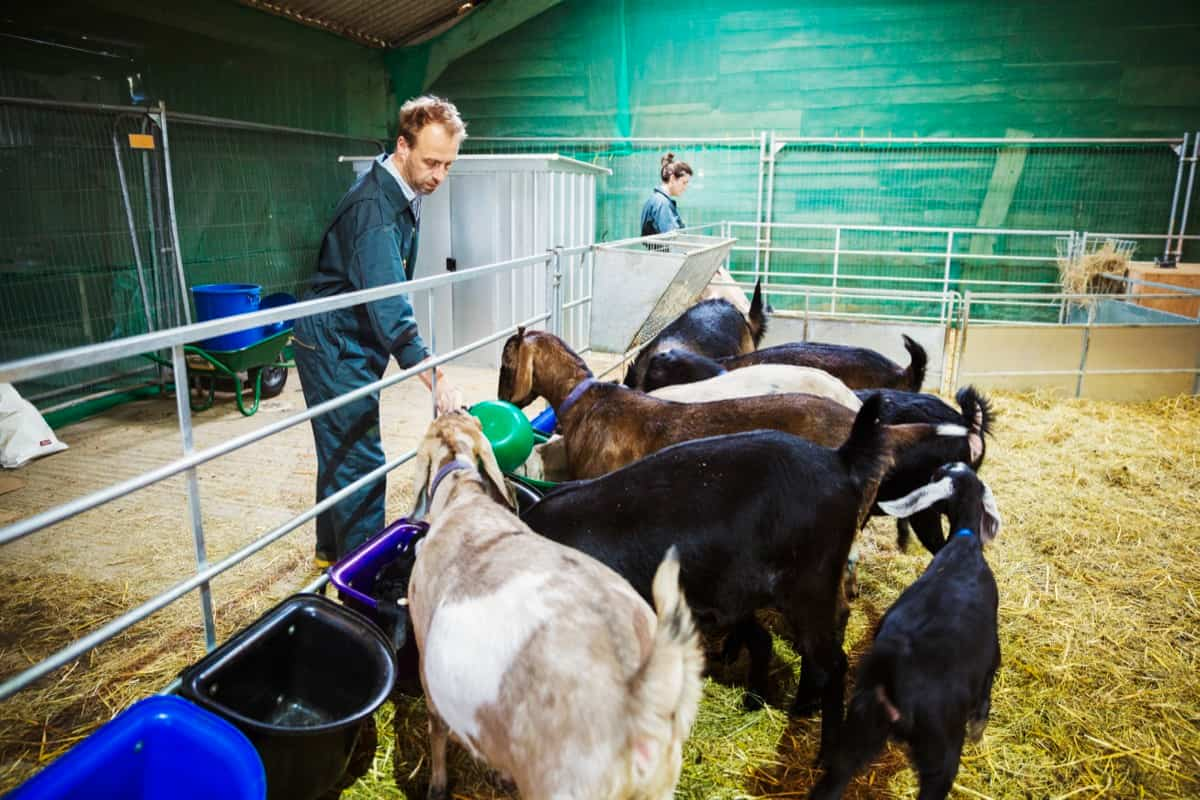Goat farming is a dynamic and intricate agricultural practice that requires careful monitoring and management of the health and dietary needs of the animals. One essential element in the goat feed regimen that is frequently overlooked is the inclusion of Ammonium Chloride. This simple, affordable compound has been proven to possess considerable benefits in ensuring the overall well-being and productivity of goats, regardless of the scale of the farm.

With multiple uses and applications, goat farmers must understand how to properly use ammonium chloride for goats, the risks and mitigations, and the compound’s wider applications. This article explores these topics and more, providing a thorough guide on the benefits of Ammonium Chloride in goat farming below.
The Role and Benefits of Ammonium Chloride in Goat Farming
Ammonium chloride is a feed additive that plays a vital role in urinary health in goats, especially males. It aids in preventing the formation of urinary calculi or stones – a common health issue in goats, particularly those castrated at a young age. Urinary calculi can block the urethra, causing discomfort and illness; in severe cases, it can be fatal. Understanding how to use ammonium chloride for goats and implementing its regular use in their diet can play a significant role in promoting urinary tract health and preventing this problematic condition.
The key to ammonium chloride’s effectiveness is its ability to acidify the urine. The compound, when ingested, passes into the bloodstream and eventually to the kidneys. Here, it helps lower the pH of the urine, making it more acidic. This shift in pH makes it more difficult for stones or crystals to form, helping prevent urinary calculi.
While the benefits of ammonium chloride are clear, there may be the question, “Can you give a goat too much ammonium chloride?” The answer is yes. Like any other supplement, moderation is key. Overdosing can cause discomfort or potentially more serious side effects like metabolic acidosis. Therefore, farmers must be diligent about dosage and application methods to ensure they’re reaping the benefits without causing harm.
Application Methods: The Drenching Technique
One of the most effective ways to administer ammonium chloride to goats is through drenching. This process involves using a drench gun or syringe to deposit the ammonium chloride solution directly into the goat’s mouth. To prepare the drench, mix the recommended dose of ammonium chloride with water until it’s fully dissolved. The solution is then filled into a drench gun or a large syringe.
The device is then inserted into the side of the goat’s mouth, behind the teeth but before the throat, and the solution is slowly released. The goat should swallow the solution without aspirating. This technique enables the farmer to ensure that each animal receives the correct dose, which is crucial for its effectiveness and safety.
Drenching is most commonly used when a specific goat needs to be targeted treatment or when prevention of urinary calculi is prioritized for certain higher-risk goats in the herd. However, it is also possible to incorporate ammonium chloride into the goat’s daily feed or water supply for broader preventive measures. The appropriate method will depend on the needs of the specific farming context.
In case you missed it: Goat Contract Farming 101: Everything You Need to Know

Ammonium Chloride for Female Goats and Other Livestock
While it’s generally understood that male goats benefit significantly from ammonium chloride due to their susceptibility to urinary calculi, what about ammonium chloride for female goats? Although females are less prone to developing urinary calculi, they can still benefit from ammonium chloride. The supplement can aid in maintaining a healthy urinary pH, decreasing the likelihood of urinary infections, and supporting overall health.
However, the dosage should be carefully managed as female goats require less compound than males. The use of ammonium chloride in female goats should, therefore, be a balanced decision, considering factors such as the health status of the goat, the quality of the diet, and other environmental factors.
This leads us to the question of ammonium chloride’s applicability in other livestock farming, notably cattle, and sheep. Starting with the latter, using ammonium chloride for sheep aligns with its application in goat farming. Male sheep, or rams, also face a risk ofriskli due to their similarities with goats’ urinary systems. Therefore, regular ammonium chloride use can help maintain sheep’s urinary health. The dosage and administration method should be determined in consultation with a veterinary professional, considering the animal’s size, age, and general health.
As for cattle, the application of ammonium chloride differs slightly. The primary use of ammonium chloride in cattle farming is to control and prevent a condition known as grass tetany or hypomagnesemia. This metabolic disorder is caused by low magnesium levels in the animal’s body, often seen in lactating cows grazing on spring pasture. Therefore, the ammonium chloride dosage for cattle focuses on this aspect rather than urinary health.
Dosage Considerations and Side Effects
Dosage is a critical factor when administering ammonium chloride to goats. Generally, a typical dosage might range from 0.1 to 0.3% of the total feed dry matter intake. For example, a 70kg goat eating 2% of its body weight in feed translates to approximately 1.4-4.2 grams of ammonium chloride daily. As such, it is highly recommended to consult a veterinarian or a livestock nutritionist for the most accurate dosage instructions.
In case you missed it: How to Start Goat Farming in South Africa: A Comprehensive Guide to Beginners

While ammonium chloride is generally considered safe for goats, there are a few potential side effects. As mentioned earlier, overuse can lead to metabolic acidosis, which occurs when there’s too much acid in the body fluids. This condition can cause rapid breathing, confusion, fatigue, and in severe cases, can be life-threatening. Additionally, extended use of high doses can potentially cause damage to the goat’s kidneys.
Conclusion
In summary, using ammonium chloride in goat farming is a powerful preventive measure against urinary calculi, particularly in male goats. Its application through drenching allows for targeted treatment, ensuring each goat receives the correct dosage. Furthermore, its use extends to female goats and other livestock, such as sheep and cattle, albeit for different reasons and at different dosage levels.
- Ultimate Guide to Ossabaw Island Hog: Breeding, Raising, Diet, and Care
- Ultimate Guide to Juliana Pig: Raising Facts, Size, Diet, Care, and Lifespan
- Raising Lleyn Sheep: Disadvantages, Price, Uses, Characteristics, and Care
- Ultimate Guide to Meishan Pig: Breed Facts, Breeding, Raising, and Care
- Ultimate Guide to Teacup Pigs: Raising, Diet, Lifespan, Cost, and Care
- Guide to Raising Poll Dorset Sheep: Facts, Profile, Characteristics, Uses, and Care
- Ultimate Guide to Bighorn Sheep: Characteristics, Diet, Lifespan, Breeding, and Lifecycle
- Ultimate Guide to Raising Katahdin Sheep: Farming Facts, Breed Profile, Uses, and Care
- Ultimate Guide to Raising Oreo Cows: Belted Galloways Farming Facts, Profile, Uses, and Care